Photographer Adam Wiseman documents self-built houses in rural Mexico
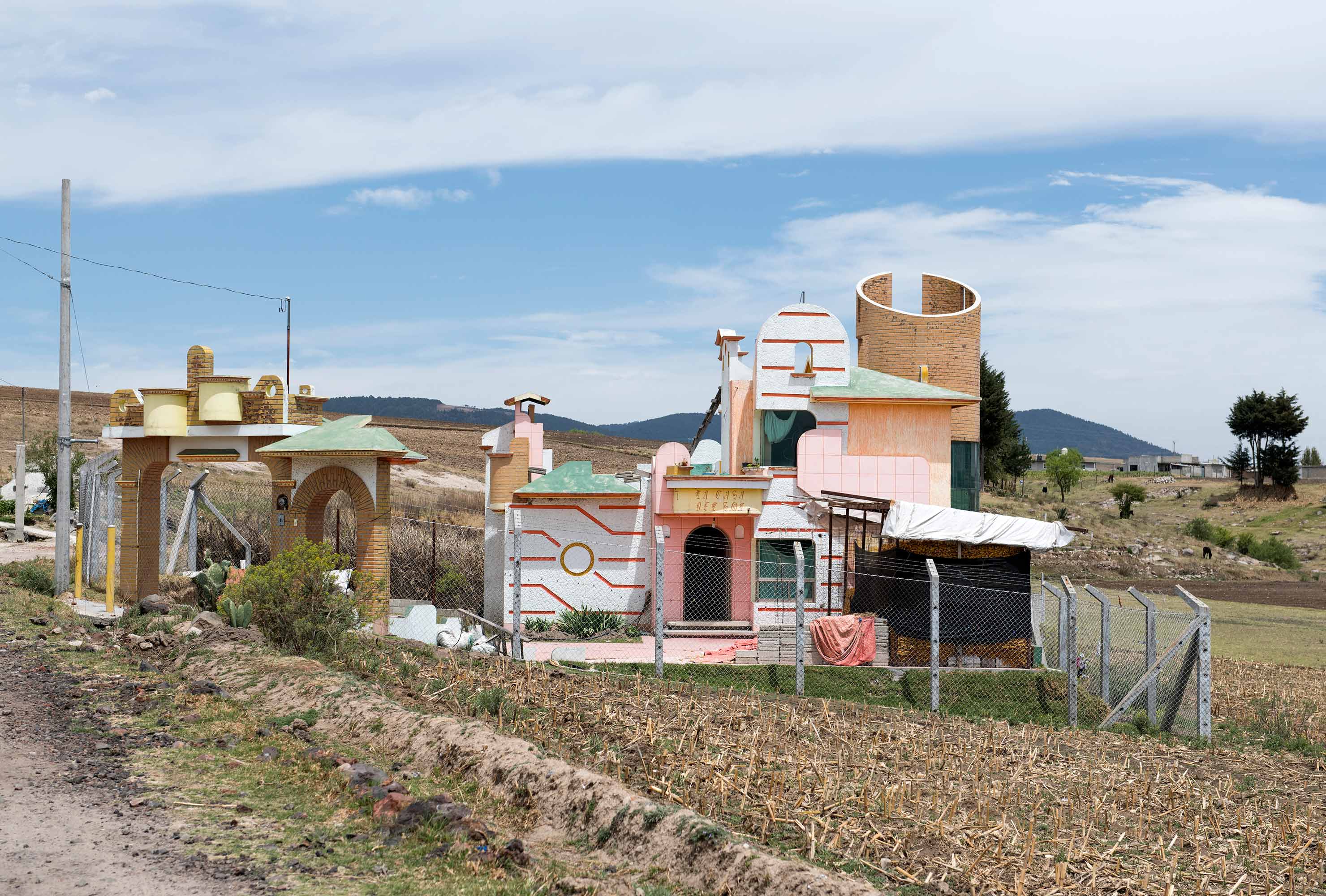
Travelling the rural landscape and outer urban neighbourhoods of Mexico, photographer Adam Wiseman has documented the country's rural self-built structures in a new series. Mostly designed and built by non-architects, the houses lift references from a hotch-potch of sources such as Disney, neo-classicism and American suburbia to fascinating effect. Exploring the typology as an anthropologist, photo-journalist and also an artist, Wiseman has coined the term ‘Free architecture’ to describe their layered style and meaning.
Wiseman began to notice these unusual looking houses when he was driving through the countryside with his wife, Annuska, over a decade ago, although he thinks that they must have been around a lot longer. Once he clocked one, more and more kept emerging from the landscape: ‘They are the kind of surreal background that one doesn't always notice, and when one does you can’t understand how you never did,’ he says.

One of the houses from Wiseman's series, ‘Free architecture’.
Rising from roadsides and neighbourhood corners, or fields in the distance, there is something seductive about these houses, their collective combinations of turrets, neo-classical style columns, plastered iconography, built with raw materials and often in various states of completion. While being loud, colourful and crass, they are also fascinating, and to those with a postmodern leaning, there can be a full on attraction.
Wiseman’s curiosity grew into a need to document and research. He met with some of the ‘architects’ to find out about their process: ‘I discovered the relationship they had with migration, and consequently the symbiotic and idiosyncratic connection to the US, this of course piqued my interest and I became interested in the question of a home not as functional but as statement.’
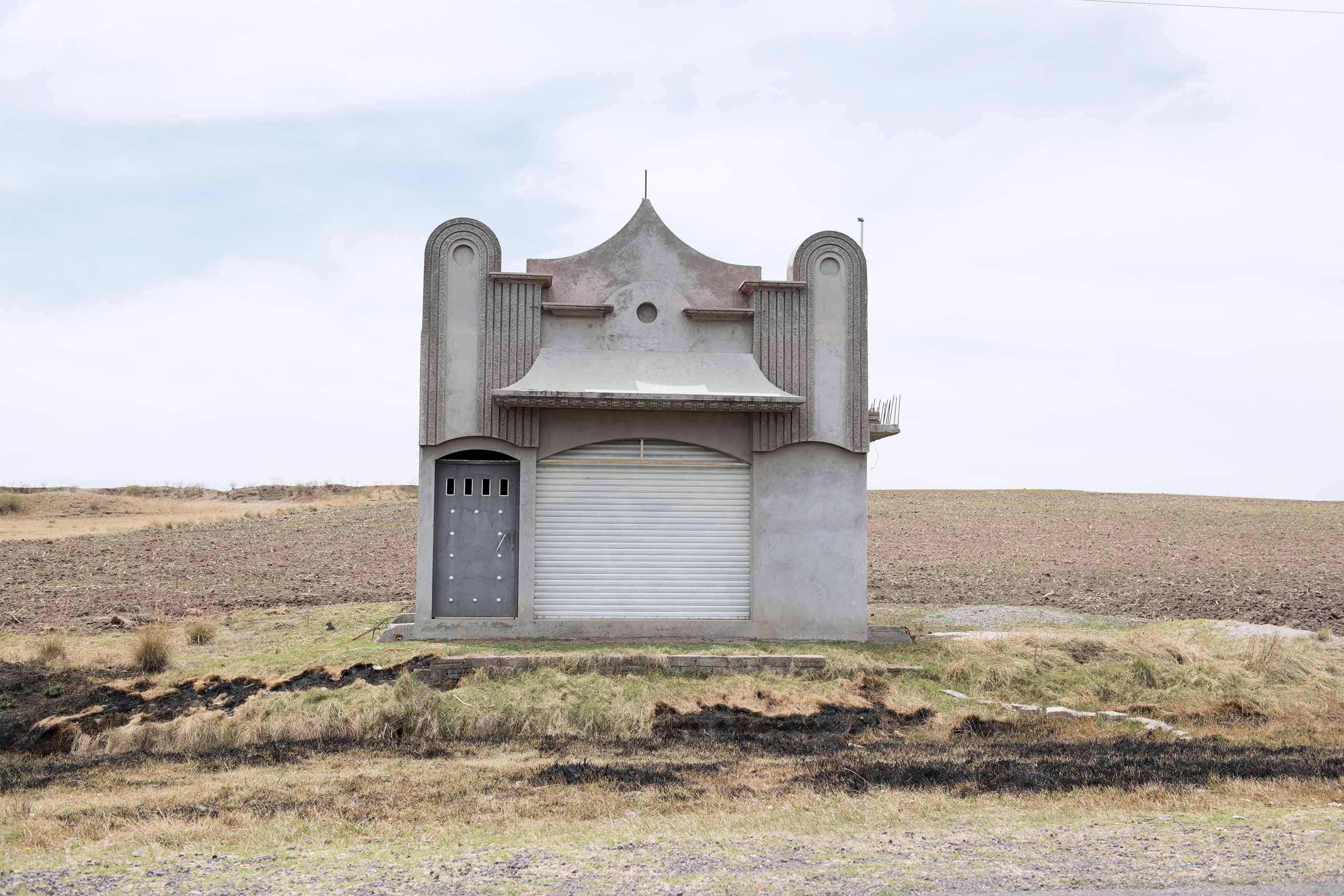
A concrete house in the Mexican landscape with art deco style properties.
Many of the houses are funded by remittances, money sent by Mexicans working in the US back home. Their design also stems from this experience of migration to the US, as the elements lifted from American architecture – such as Hollywood, Disneyland and suburbia. Yet, the houses often remain empty, and exist as aspirational and symbolic substitutes for their owners, who are still working in the US.
It was this twist that pushed Wiseman to develop his theories further and ask more questions about the social and cultural dimensions of the houses. ‘I became interested in the question of a home, not as functional, but as statement – the idea of a home having a purpose that was more important than what a home is traditionally meant to do, vis a vis, give shelter. As well as the absurd geopolitical circumstances where a home that is not lived in takes the place of the immigrant who had to leave – where the owner had to leave his home to build a "home" where he no longer lives. The question of displacement becomes one of re-placement,’ he says.

A house inspired by a medieval castle.
The photographs level up to the facades, picturing them straight on, the careful framing increasing the absurdity of what is within. The clear, documentary style of photography highlights all the features so each house can be compared against another in its style. One thing most have in common is their unfinished elements, which Wiseman found out is often due to the changing taste of the owners, lack of budget, or the misinterpreted wishes of family members building on behalf of owners. This ‘unfinished’ aspect however, is another stylistic element in its own right, in a postmodern sense.
‘These houses cannot be seen as one traditionally sees architecture, it is too easy to write them off as kitsch or eyesores – which perhaps they can be at times – but there is much to admire and learn from them,’ says Wiseman, who references Robert Venturi and Denise Scott Brown’s Learning from Las Vegas and Robert Smithson's Hotel Palenque as constructive resources to his understanding of these contributions to the built environment and development of ‘Free architecture’.

A colourful Disney-inspired castle / house.
With a background in social anthropology and photojournalism, Wiseman’s approach has often been socio-cultural, yet he sees his work becoming ‘more subjective and possibly less scientific’: ‘I am interested in new ways of documenting through observation, representation, interpretation and social participation’, he says. In the case of this series, he has leant further towards a conceptual approach, as seen in contemporary art – prompted by finding cultural identity harder and harder to photograph as lifestyles become globally homogenised. He sees the Mexican architectural landscape as a culture in constant flux, unreceptive of clichés and defined by pressures of globalisation.
Wiseman’s interest in the concept of ‘Free Architecture’ continues as a three-year art grant from the Mexican Government; Fonca / SNCA has enabled him to expand into research of how government sponsored housing in Mexico is adapted to suit the tastes and needs of residents.

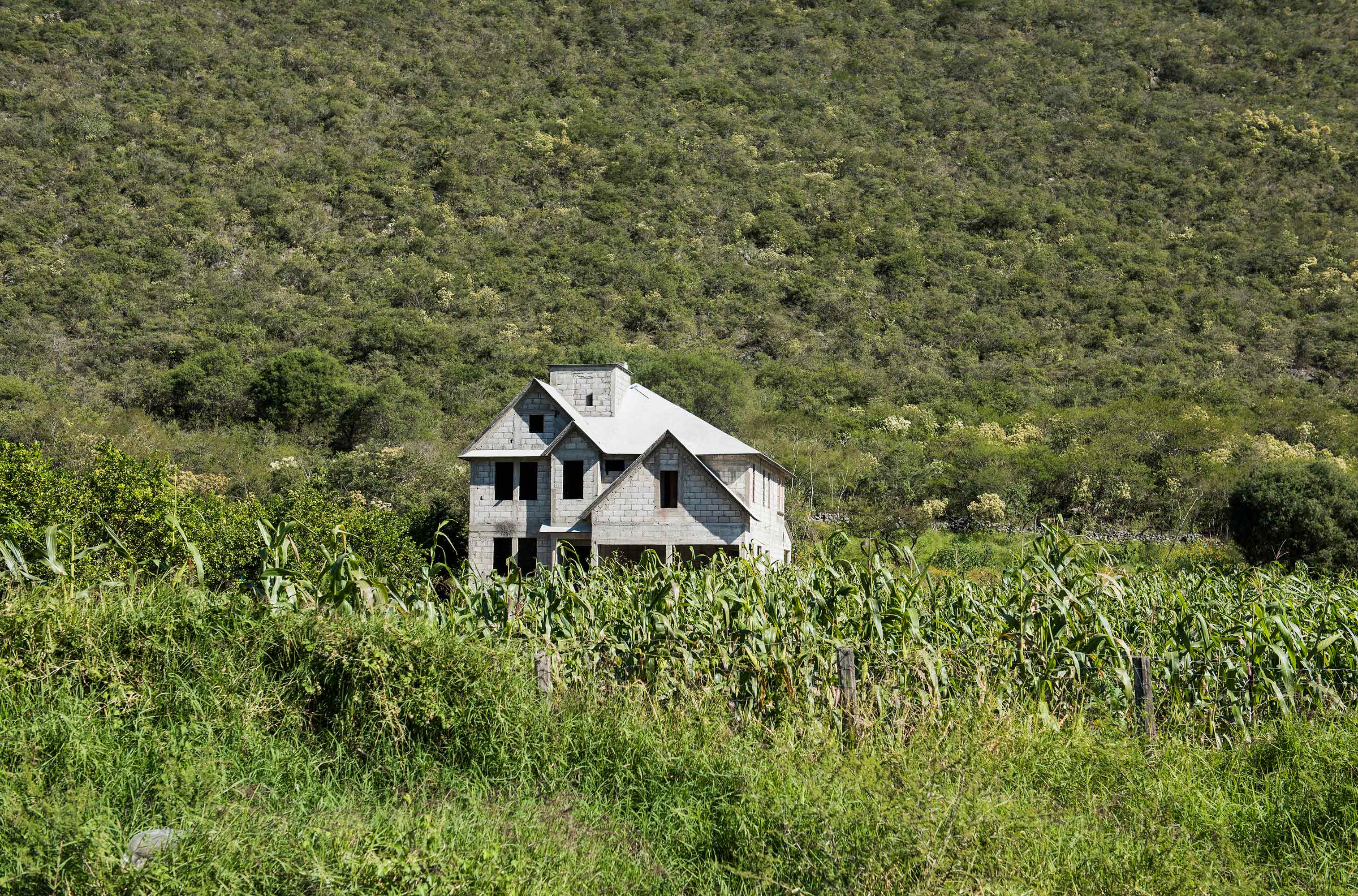
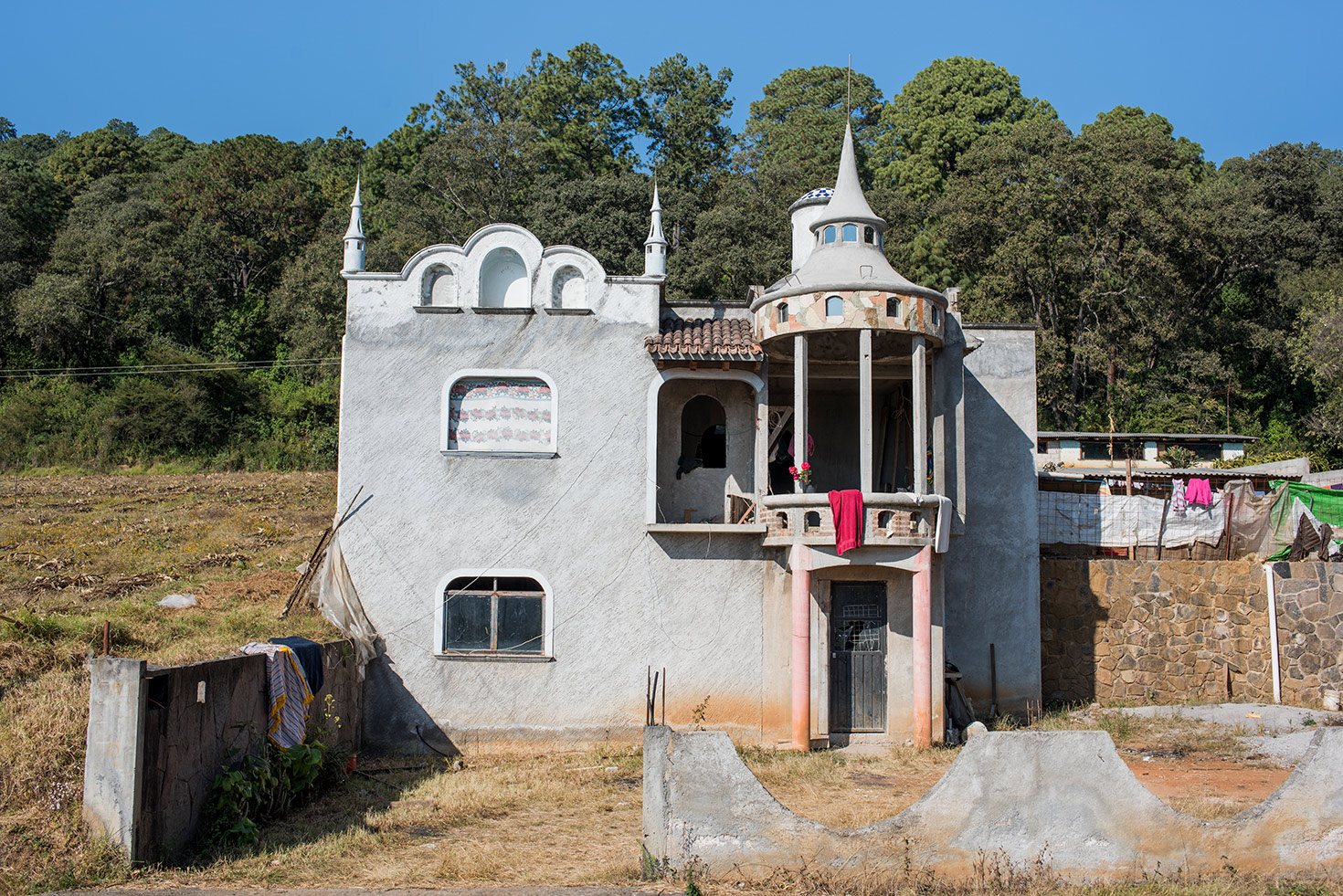
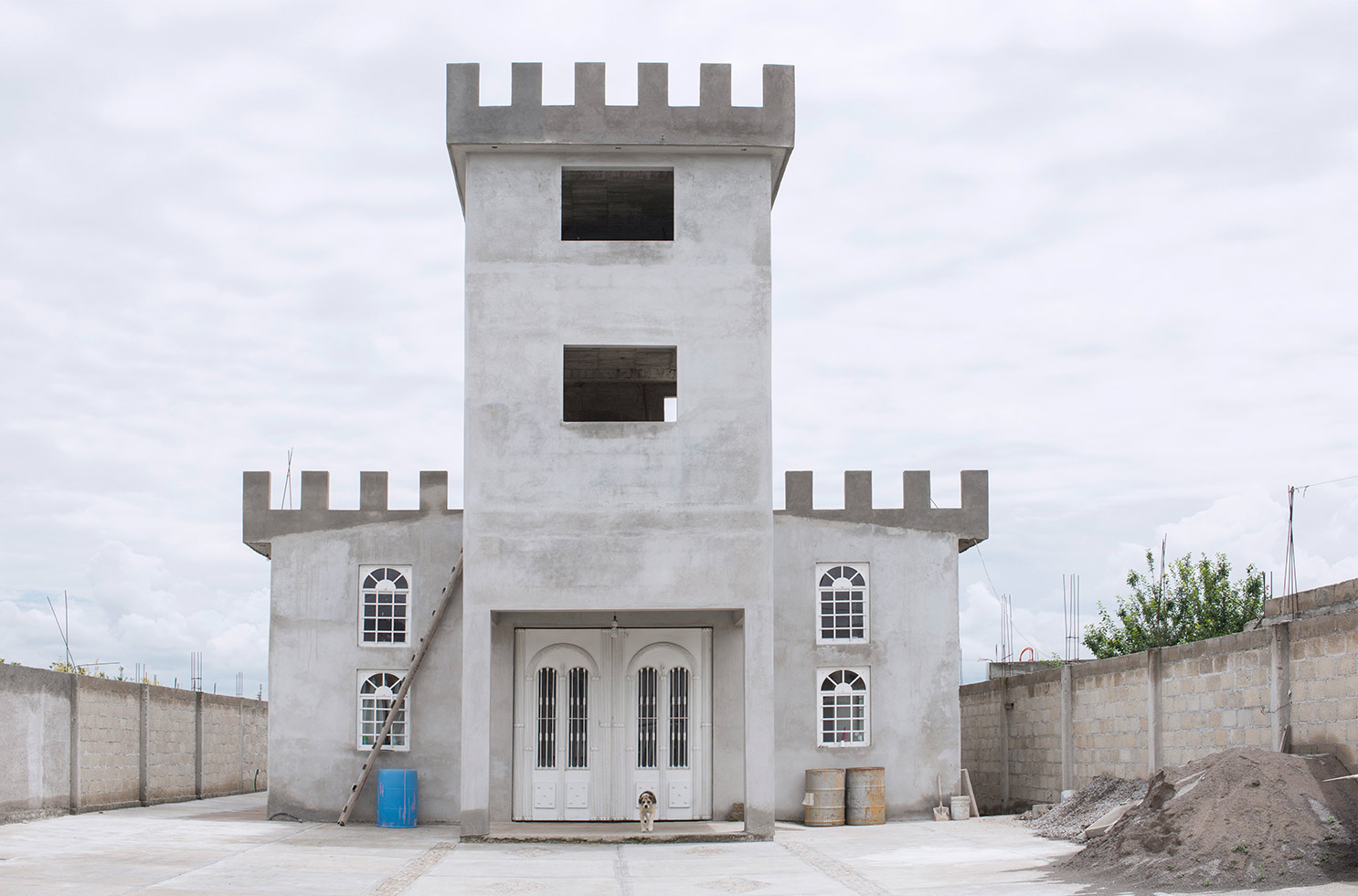
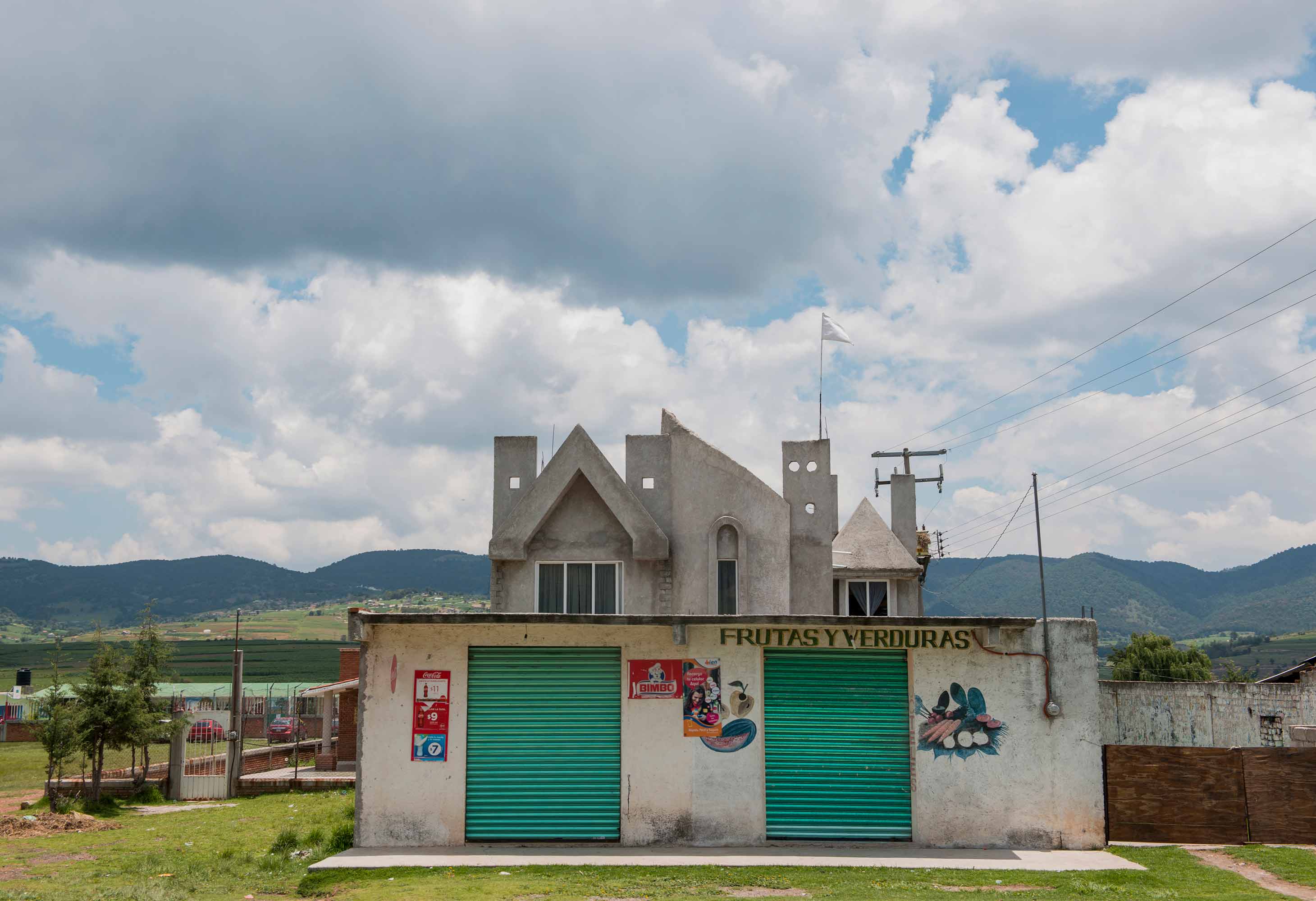
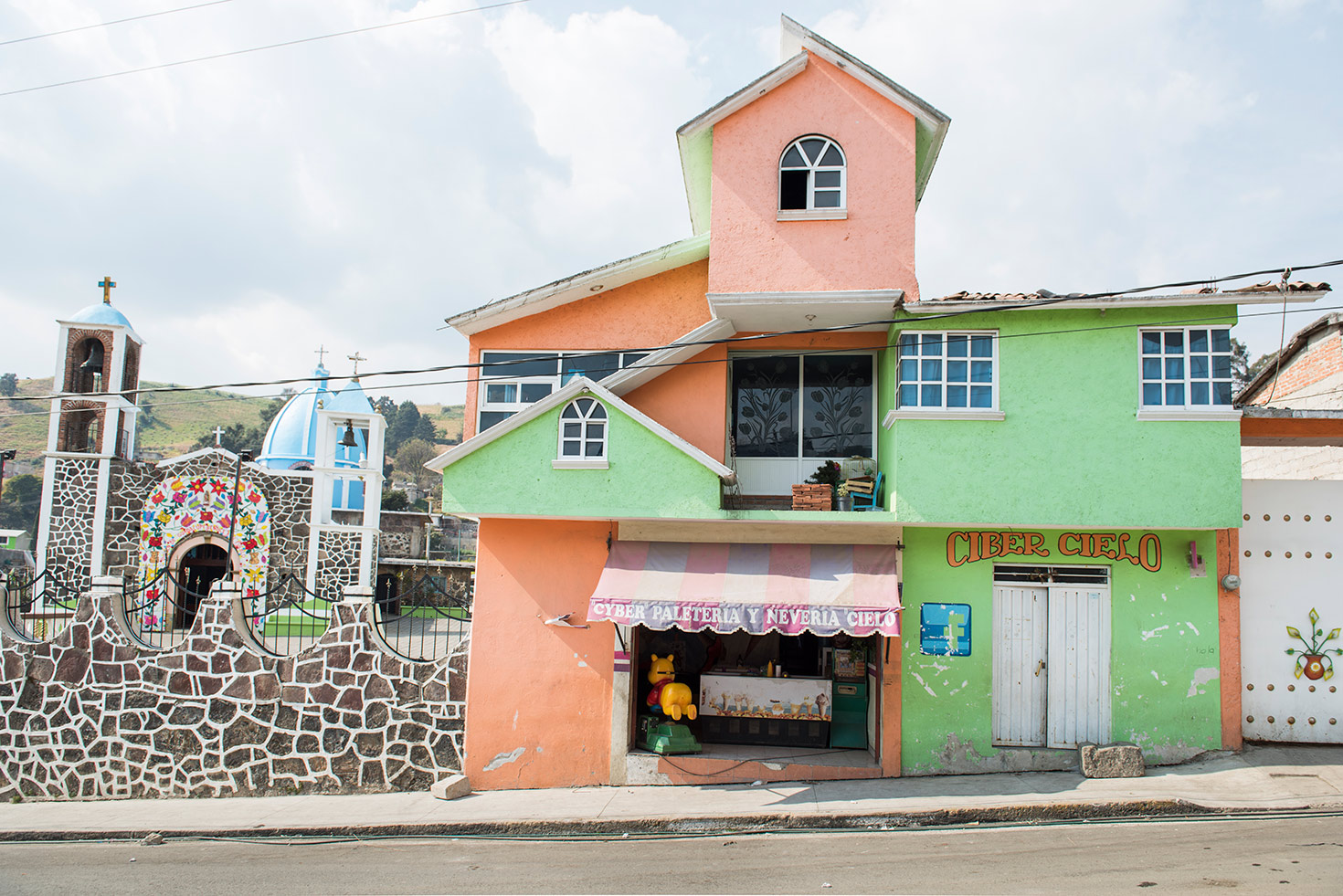
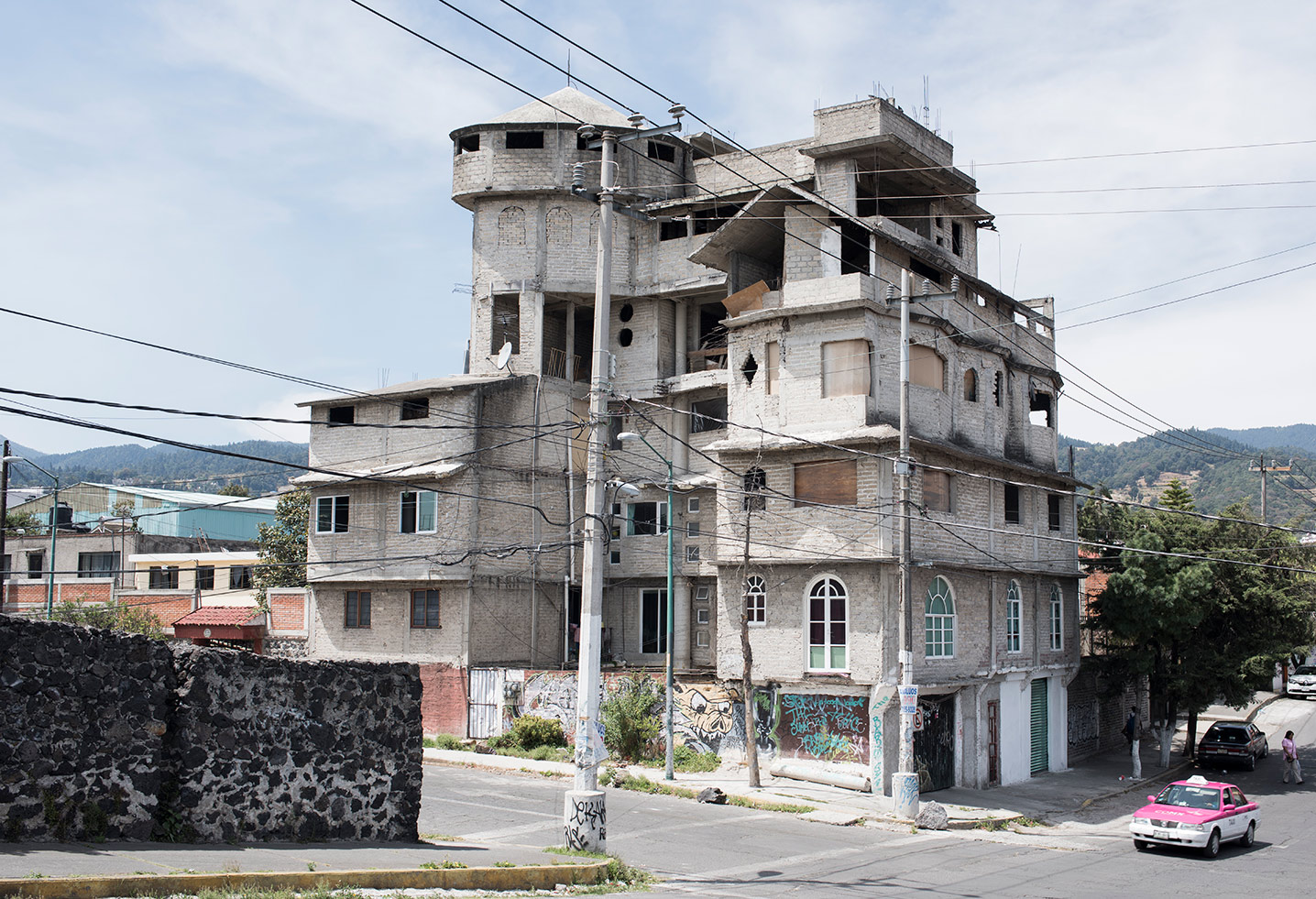
INFORMATION
For more information, visit Adam Wiseman’s website
Receive our daily digest of inspiration, escapism and design stories from around the world direct to your inbox.
Harriet Thorpe is a writer, journalist and editor covering architecture, design and culture, with particular interest in sustainability, 20th-century architecture and community. After studying History of Art at the School of Oriental and African Studies (SOAS) and Journalism at City University in London, she developed her interest in architecture working at Wallpaper* magazine and today contributes to Wallpaper*, The World of Interiors and Icon magazine, amongst other titles. She is author of The Sustainable City (2022, Hoxton Mini Press), a book about sustainable architecture in London, and the Modern Cambridge Map (2023, Blue Crow Media), a map of 20th-century architecture in Cambridge, the city where she grew up.
-
 A day in Ahmedabad – tour the Indian city’s captivating architecture
A day in Ahmedabad – tour the Indian city’s captivating architectureIndia’s Ahmedabad has a thriving architecture scene and a rich legacy; architect, writer and photographer Nipun Prabhakar shares his tips for the perfect tour
-
 You can now stay in one of Geoffrey Bawa’s most iconic urban designs
You can now stay in one of Geoffrey Bawa’s most iconic urban designsOnly true Bawa fans know about this intimate building, and it’s just opened as Colombo’s latest boutique hotel
-
 Pentagram’s identity for eVTOL brand Vertical Aerospace gives its future added lift
Pentagram’s identity for eVTOL brand Vertical Aerospace gives its future added liftAs Vertical Aerospace reveals Valo, a new air taxi for a faster, zero-emission future, the brand has turned to Pentagram to help shape its image for future customers
-
 A cubist house rises in Mexico City, its concrete volumes providing a bold urban refuge
A cubist house rises in Mexico City, its concrete volumes providing a bold urban refugeCasa Ailes, a cubist house by Jaime Guzmán Creative Group, is rich in architectural expression that mimics the dramatic and inviting nature of a museum
-
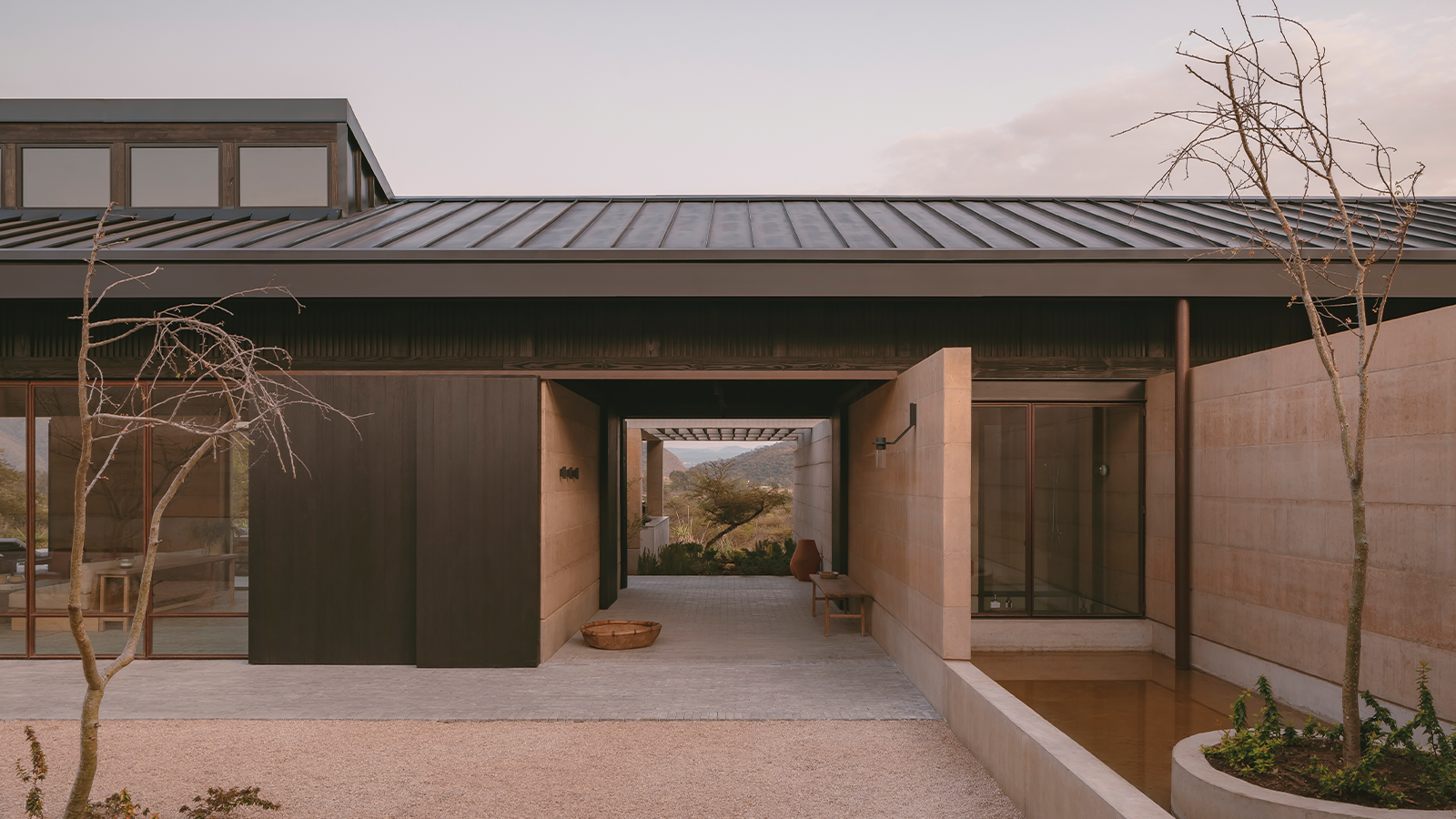 Serenity radiates through this Mexican home, set between two ravines
Serenity radiates through this Mexican home, set between two ravinesOn the cusp of a lakeside town, Mexican home Casa el Espino is a single-storey residence by Soler Orozco Arquitectos (SOA)
-
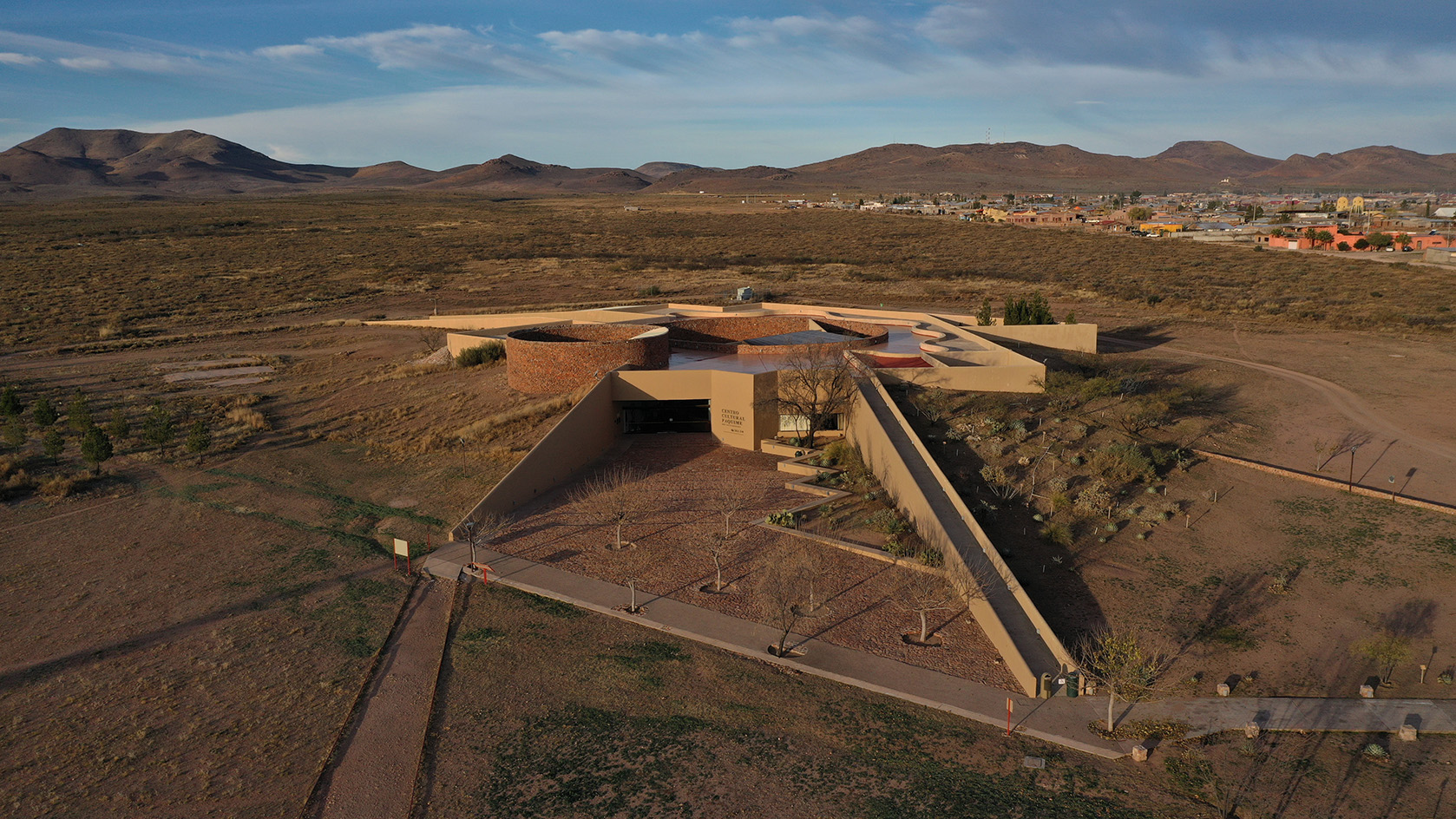 Mexican landscape architect Mario Schjetnan's Grupo de Diseño wins 2025 Oberlander Prize
Mexican landscape architect Mario Schjetnan's Grupo de Diseño wins 2025 Oberlander PrizeThe 2025 Oberlander Prize goes to Mexican landscape architect Mario Schjetnan and his studio, Grupo de Diseño, highlighting the creative's motto: 'We have a human right to open space'
-
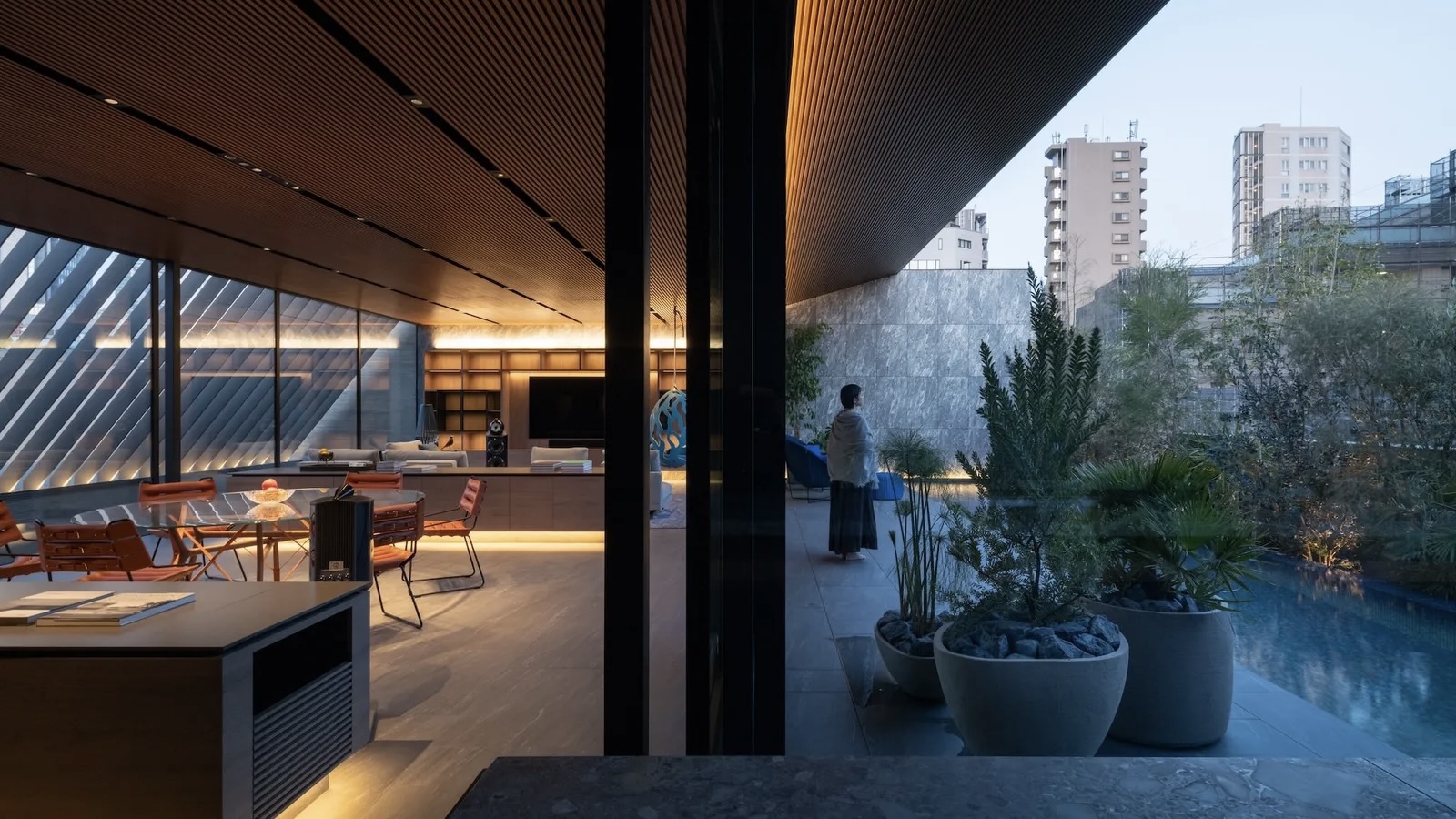 The Architecture Edit: Wallpaper’s houses of the month
The Architecture Edit: Wallpaper’s houses of the monthThis September, Wallpaper highlighted a striking mix of architecture – from iconic modernist homes newly up for sale to the dramatic transformation of a crumbling Scottish cottage. These are the projects that caught our eye
-
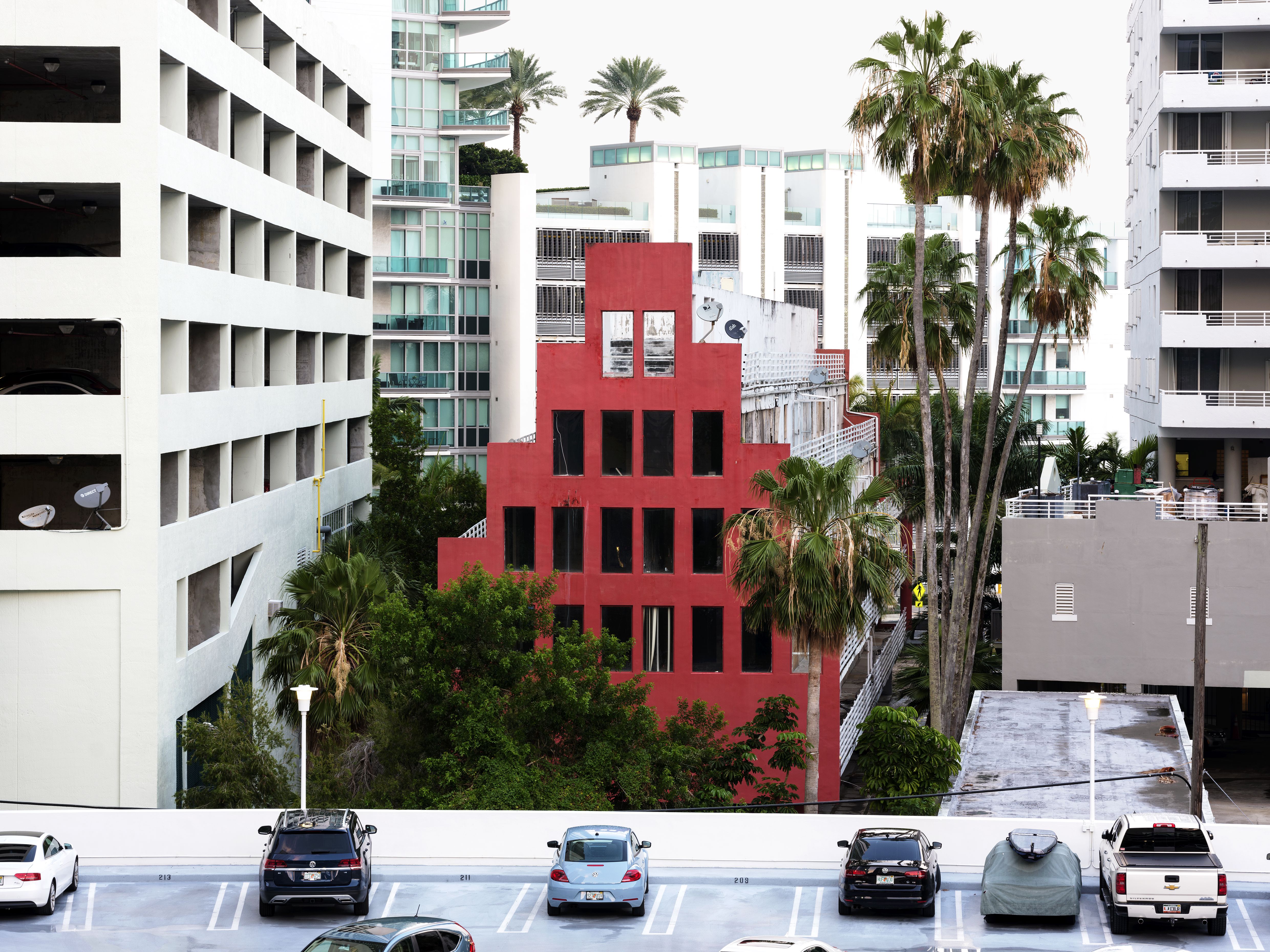 Max Creasy on the future of architectural photography and a shift to the ‘snapshot’
Max Creasy on the future of architectural photography and a shift to the ‘snapshot’A show of photographer Max Creasy’s work opens at the AA in London, asking a key question: where is contemporary architectural photography heading?
-
 A Mexican clifftop retreat offers both drama, and a sense of place
A Mexican clifftop retreat offers both drama, and a sense of placeCasa Piscina del cielo, a clifftop retreat by Zozaya Arquitectos, creates the perfect blend of drama and cosiness on Mexico's Pacific Coast
-
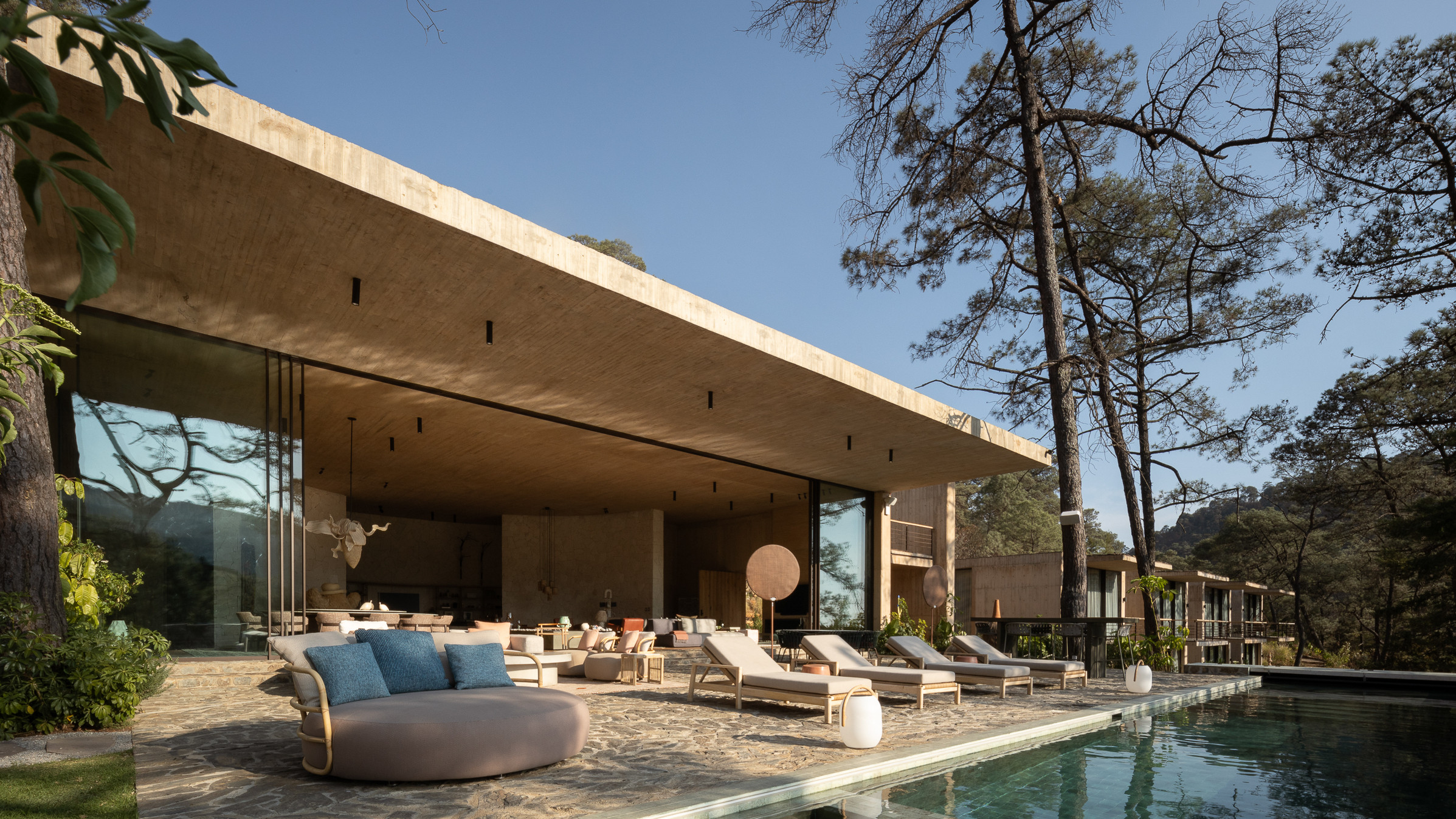 Broken up into six pavilions, this brutalist Mexican house is embedded in the landscape
Broken up into six pavilions, this brutalist Mexican house is embedded in the landscapeSordo Madaleno’s brutalist Mexican house, Rancho del Bosque, is divided up into a series of pavilions to preserve the character of its hillside site, combining concrete, curves and far-reaching views
-
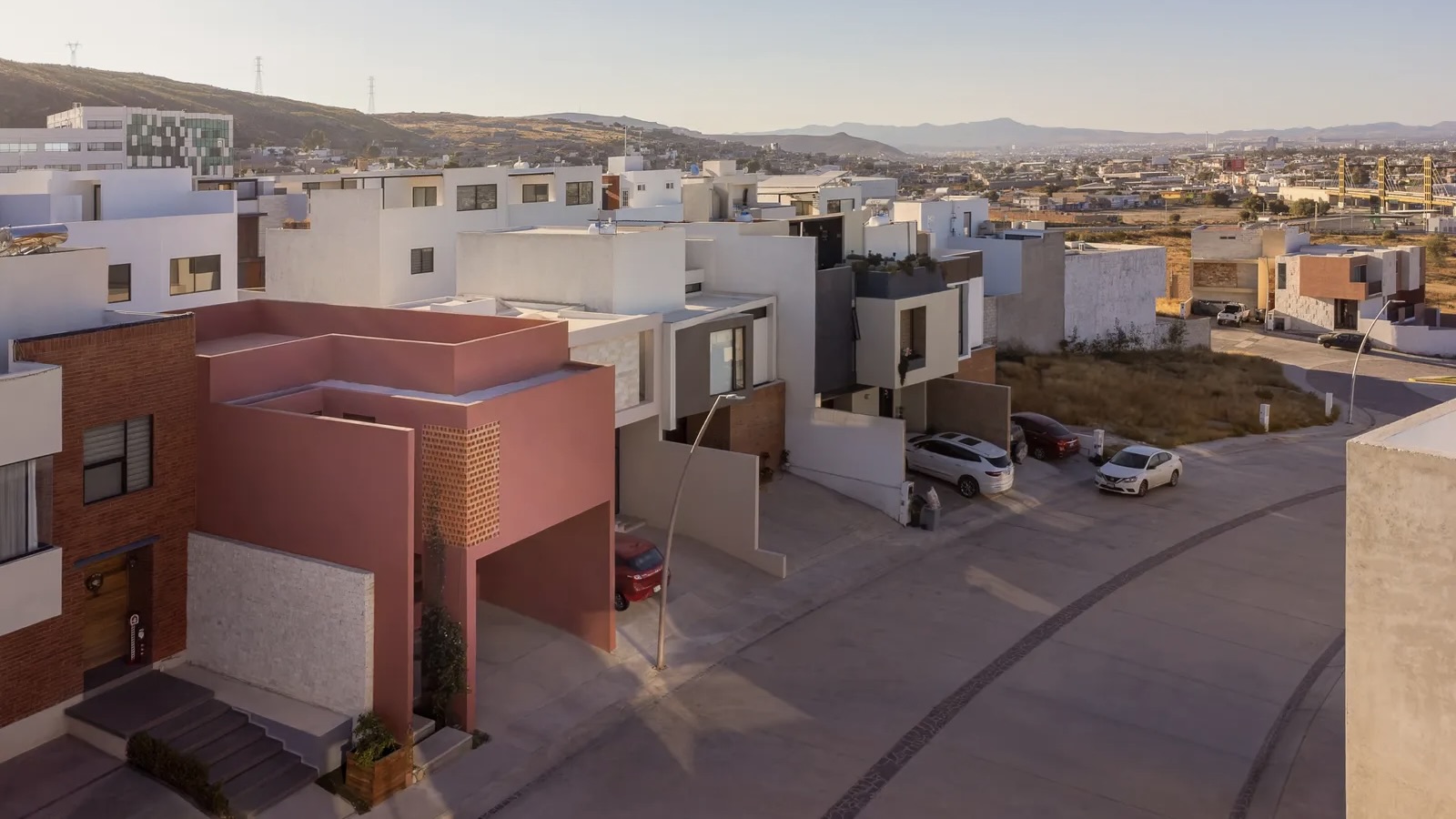 The Architecture Edit: Wallpaper’s houses of the month
The Architecture Edit: Wallpaper’s houses of the monthWallpaper* has spotlighted an array of remarkable architecture in the past month – from a pink desert home to structures that appears to float above the ground. These are the houses and buildings that most captured our attention in August 2025